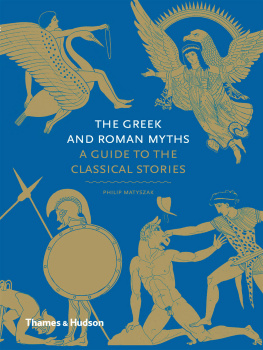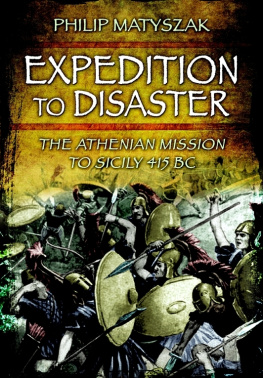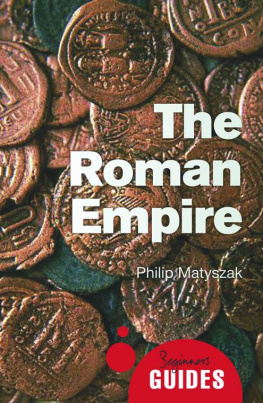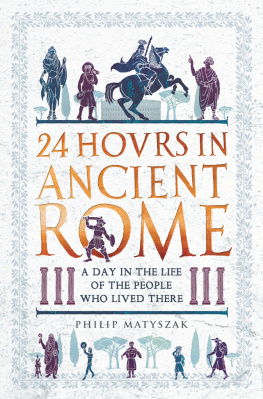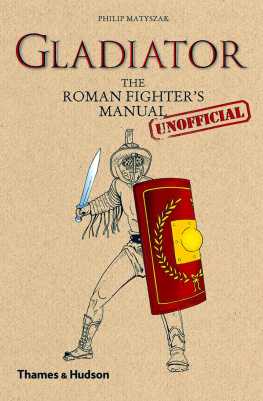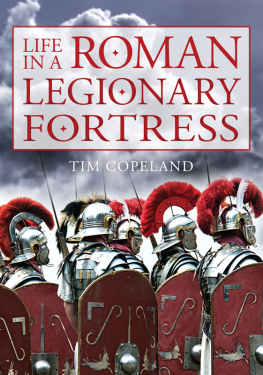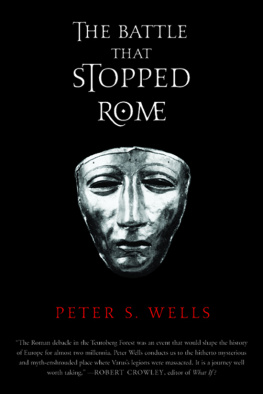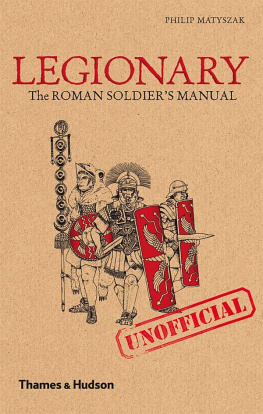LEGIONARY


About the Author
Philip Matyszak has a doctorate in Roman history from St Johns College, Oxford, and is the author of Chronicle of the Roman Republic, The Enemies of Rome, The Sons of Caesar, Ancient Rome on Five Denarii a Day and Ancient Athens on Five Drachmas a Day. He teaches an e-learning course in Ancient History for the Institute of Continuing Education at Cambridge University.
To John Radford, Gunther Maser and the others from 5 Group, Mrewa.

Originally published in the United Kingdom in 2009 as
Legionary: The Roman Soldiers (Unofficial) Manual
ISBN 978-0-500-25151-5
by Thames & Hudson Ltd, 181a High Holborn, London WC1V 7QX
and in the United States of America by
Thames & Hudson Inc., 500 Fifth Avenue, New York, New York 10110
Copyright 2009 Thames & Hudson Ltd, London
This electronic version first published in 2013 by
Thames & Hudson Ltd, 181a High Holborn, London WC1V 7QX
This electronic version first published in 2013 in the United States of America by
Thames & Hudson Inc., 500 Fifth Avenue, New York, New York 10110.
To find out about all our publications, please visit
www.thamesandhudson.com
www.thamesandhudsonusa.com
All Rights Reserved. No part of this publication may be reproduced or transmitted in any form or by any means, electronic or mechanical, including photocopy, recording or any other information storage and retrieval system, without prior permission in writing from the publisher.
ISBN 978-0-500-77173-0
ISBN for USA only 978-0-500-77174-7 (e-book)
On the cover: Legionaries of the early 1st century.
(Peter Inker Thames & Hudson Ltd, London)
Half-title page: Legionarys dagger and sheath. Daggers are used for repairing tent cords, sorting out boot hobnails and general legionary maintenance, and consequently see much more use than a sword. (Museum of London)
Title page: Trajan addresses troops after battle. A Roman general tries to be near the front lines in a fight so that he can personally comment afterwards on feats of heroism (or shirking). (Museo della Civilt Romana, Rome/akg-images)
Other titles in this series include:
Gladiator: The Roman Fighters (Unofficial) Manual
Knight: The Medieval Warriors (Unofficial) Manual
Samurai: The Japanese Warriors (Unofficial) Manual
Viking: The Norse Warriors (Unofficial) Manual
Other titles by Philip Matyszak published by
Thames & Hudson include:
Ancient Rome on Five Denarii a Day
The Enemies of Rome: From Hannibal to Attila the Hun
The Greek and Roman Myths: A Guide to the Classical Stories
Lives of the Romans
The Sons of Caesar: Imperial Romes First Dynasty
Other titles of interest published by
Thames & Hudson include:
Rome & the Sword: How Warriors & Weapons Shaped Roman History
The Complete Roman Army
Chronicle of the Roman Emperors: The Reign-by-Reign Record of the Rulers of Imperial Rome
See our websites
www.thamesandhudson.com
www.thamesandhudsonusa.com
Contents
conscribe te militem in legionibus. pervagare orbem terrarum. inveni terras externas. cognosce miros peregrinos. eviscera eos *
* Join the legions, see the world, travel to foreign parts, meet interesting and exotic people, and disembowel them.
Rome needs you!
In this year, AD 100, one of the first years of the reign of the emperor Marcus Ulpius Nerva Traianus (later known as Trajan), Romes empire knows no bounds. Our frontiers stretch to the deserts beyond distant Palmyra, and across the bogs and mists of Britannia. Yet everywhere, Romes security is at risk. Scheming and subversive political elements foment rebellion within the framework of the state, wild barbarians constantly probe the borders for weakness, and the great and jealous power of Parthia threatens the entire East. Against these multiple dangers stand two great towers of defence the wisdom and energy of our emperor, and the might of the Roman army, which, ever faithful, protects and serves the Roman people.
Never has there ever been a better time to join the Roman army. Three generations since the emperor Augustus put it on to a professional footing, the military system has been fine-tuned to create the deadliest and most sophisticated fighting force the world has ever seen. Everything is organized with Roman precision, from when a raw recruit signs on, until after he has been pensioned off (or given a decent funeral). After 40 years of being (militarily speaking) one of the most interesting places in the empire, the defiant Britons have been largely subdued, and the glory days of campaigning in wet socks have come to an end. Attention is turning to the troublesome kingdom of Dacia beyond the Danube, and after that, a final reckoning with the Parthians awaits in the desert sands of Mesopotamia.

Marcus Ulpius Nerva Traianus, Imperator Optimus, ruler of Rome, master of the known world and your commander-in-chief. Here we see him in armour, with his generals red cloak draped over one arm. Born in Hispania Baetica (Spain) in AD 53, Trajan has been emperor since AD 98. May his reign be long and glorious! (Muse du Louvre, Paris)
The army of Rome possesses the worlds most advanced and powerful weapons and equipment, making it second to none in terms of mobility, firepower and protection. A legionary might find his home in an army post anywhere in the empire, where hell live and train to be at his best for when the army takes the field. For the right recruit, the army can provide direction, career opportunities and a steady income for the next 25 years. This manual will provide guidance for all of those years, from where and how to sign up, to the complexities of training, armour and drill. It will give you tips on surviving battle and life in camp, and finally guide you to a peaceful and prosperous retirement when your campaigning days are done.
Who can sign up?
Without the Roman army, there would be no Rome. Being a soldier is one of the citys proudest traditions. Most of Romes emperors have been soldiers, and in the days of the Republic few politicians could face the voters and win office if they had not already faced Romes enemies and won victories in the field. Romulus, Cincinnatus, Cato the Censor and Cicero all saw military action. The men they commanded were Roman citizens, and citizens of good standing too, for the ranks of Romes army were and still are closed against slaves, criminals and neer-do-wells.
The Pax Romana The Roman Peace
The known world is entering into a period of unprecedented peace and prosperity which will be known to later generations as the Pax Romana. This peace does not mean that the legions wont spend much of their time killing and getting killed by enemies outside the Roman frontiers, but within the borders of the empire there is an agreement between Rome and her subjects that the subjects will not rebel, and in return the legionaries will not burn down their cities and crucify the inhabitants. This policy works well, but requires emperors to have a degree of skill and competence, like those that Rome will be blessed with for most of the next century. Even the most benevolent emperors discreetly let potential trouble-makers know that they have a legion or two within pillaging distance.
Next page

